Knowledge
Neurodiversity: The Future of Special Education?
If we want to use the most effective approaches with kids—and draw on new research about the brain—special education needs to change its approach.
Published
4 years agoon
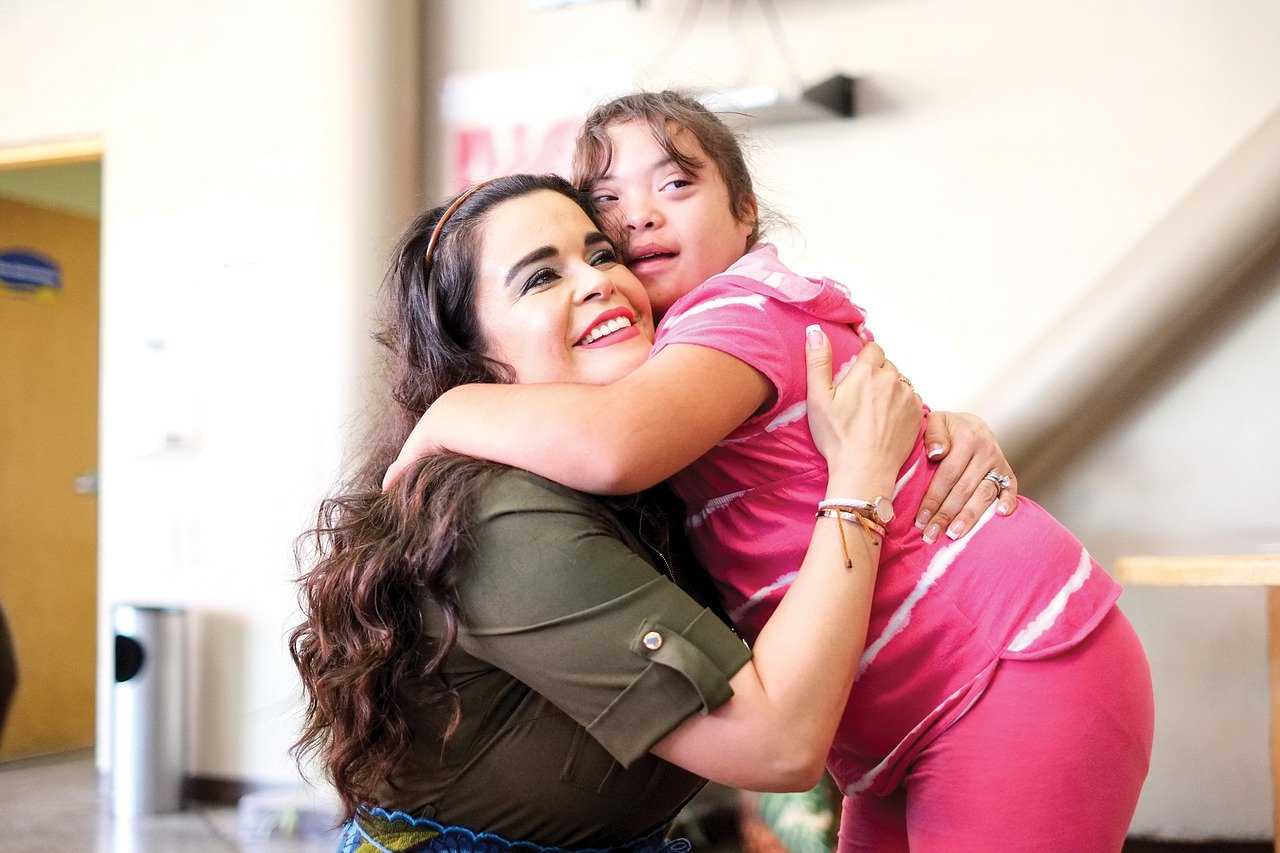
April 2017 | Volume 74 | Number 7
Differences, Not Disabilities Pages 10-16
Special education needs to change. For too long it has traveled on its own track parallel with the regular education track, carting along its own tests, programs, and terminology. For too long it's been weighed down by a history emphasizing deficit, disorder, and dysfunction, ranging all the way from Henry Goddard's creation of the "moron" in 1910 (Gould, 1996) to current formulations such as disruptive mood dysregulation disorder (now included in the DSM-5) and a proposed variation on an ADHD diagnosis called sluggish cognitive tempo (not yet added). Even as regular education has opened up to new ways of thinking about brain-based learning, neuroplasticity, a growth mindset, and other innovations, special education has too often remained insular, holding fast to its diagnostic categories, instructional objectives, proprietary learning systems, and remedial and corrective methods.
At some point, the field of special education needs to rid itself of its negative baggage and embrace a more progressive way of educating students who learn differently. The concept of neurodiversity provides the catalyst for such a change.
The Neurodiversity Revolution
Coined in the early 1990s by journalist Harvey Blume and Australian autism activist Judy Singer, the term neurodiversity can be defined as an understanding that neurological differences are to be honored and respected just like any other human variation, including diversity in race, ethnicity, gender identity, religion, sexual orientation, and so on. In the past 10 years, neurodiversity has emerged into international prominence through university programs such as the College of William & Mary's Neurodiversity Initiative and the London School of Economics's Dyslexia and Neurodiversity program, which seek to provide broader acceptance of neurodiversity on campus and to support neurodiverse students in creating positive niches for themselves at school. There have also been efforts to integrate neurodiversity into the workplace through conferences (such as one sponsored by Microsoft on Neurodiversity in the High Tech Workplace) and job initiatives to bring more people diagnosed with autism spectrum disorder and other diversities into the computer industry (Higgenbottom, 2016). Neurodiversity is popping up in media coverage in such venues as The New York Times, PBS, and Wired and in many academic papers, books, and projects. Although many neurodiversity advocates focus their efforts specifically on autism spectrum disorder (ASD), increasingly the concept is being applied to other disability categories, including learning disabilities, ADD/ADHD, intellectual disability, and social and emotional disorders (Armstrong, 2011, 2012).
How Neurodiversity Differs from Current Special Ed Approaches
A neurodiversity-based approach to special education differs in many ways from the special education system currently operating in most schools. Figure 1 summarizes these differences—some theoretical and some more practical. Let's look at a few of the differences that have the most powerful implications.
Theoretical Foundations
Conventional special education views disability categories—such as ADHD, dyslexia, and autism—as having an organic basis, usually involving some combination of biological, neurological, and genetic causes. This orientation draws from theories related to genetics and neurobiology.
Neurodiversity advocates, on the other hand, offer a more nuanced and complex approach to the origins of these conditions, focusing, for example, on the evolutionary advantages of particular disability categories as a way of explaining why the genes for certain diagnoses are still in the gene pool (for instance, see Harpending & Cochran, 2002, on how ADHD symptoms might have been adaptive to hunting and gathering societies).
Neurodiversity also places greater emphasis on the social and ecological dimensions of diagnostic labels by examining how a person may be disabled in certain contexts but not in others. For example, a person with autism spectrum disorder may function at a level surpassing a typically developing individual when working at a job that capitalizes on the ability to discover tiny errors in computer code, as has happened with employees at the Danish software company Specialisterne (Henry, 2015).
A practical outcome of this perspective is that the role of the neurodiversity-oriented special educator becomes less one of correcting errors, remediating deficits, and teaching instructional objectives and more one of creating environments within which neurodiverse students can thrive. I've termed this process positive niche construction (Armstrong, 2012).
A Focus on Strengths versus Deficits
The biggest practical difference between special education as it's currently practiced and the neurodiversity-based approach is the way in which educators emphasize either deficits or strengths. Although special educators are certainly taught to look for students' strengths, the actual infrastructure of special education doesn't provide them with much in the way of formal or informal instruments, methods, protocols, or procedures for assessing their students' strengths. The one place in special education that has done a relatively good job of this is the field of gifted and talented education, but I can't emphasize enough that these procedures need to be available for all students with special needs.
The diagnostic instruments used in most special education systems today are designed primarily to diagnose disabilities and pinpoint ways of remediating student deficits. The neurodiversity-based approach, by contrast, aims to make use of the emerging literature on the strengths of special education populations (see, for example, Mottron, 2011; Diehl et al., 2014) and focuses primarily on assessing strengths, talents, abilities, and interests.
Figure 1. A Tale of Two Special Education Paradigms
|
|
Elements of Deficit-Based Special Education |
Elements of Strengths-Based Special Education (Grounded in Neurodiversity) |
|
Focus |
Disability |
Diversity |
|
Assessment methods |
Testing to detect deficits, disorders, and dysfunctions |
Assessing strengths and challenges |
|
Instructional approaches |
Remediating weaknesses |
Building on strengths and using them to overcome challenges |
|
Theoretical foundations |
Genetics, neurobiology |
Evolutionary psychobiology, social and ecological theory |
|
View of the brains of students with special needs |
In many cases, the brain is seen as damaged, dysfunctional, or disordered |
Part of the natural human variation of all human brains |
|
Program goals |
Meeting instructional objectives |
Developing human potential |
|
Student goal |
Learning to live with your disability |
Learning to maximize your strengths and minimize your weaknesses |
|
Student self-awareness |
Explaining students' disabilities to them using machine-based metaphors |
Helping students value their diverse brains using growth mindset, neuroplasticity, and "brain forest" metaphors |
Along with the typical deficit-focused diagnostic assessments, a neurodiversity-trained special educator must be familiar with a wide range of strength-based approaches to discovering abilities in their students. For example, a teacher might use assessments associated with asset models like the VIA Character Strengths and Virtues, Dunn and Dunn Learning Style Assessments, Search Institute's 40 Developmental Assets, Gallup's StrengthsFinder, the Torrance Test of Creative Thinking, the Multiple Intelligences Diagnostic Assessment Scales, or the Baron-Welsh Art Scale. He or she might tap informal assessment methods to gain additional information about student strengths, including rough-and-ready inventories such as my 165-item Neurodiversity Strengths Checklist (Armstrong, 2012), "strengths chats," (Epstein, 2008), and motivational interviewing (Sheldon, 2010).
A neurodiversity-oriented approach would focus more attention on using the information gained from such assessments to help build on learners' strengths and to help students use their assets to tackle their social, emotional, cognitive, and academic challenges. Whereas traditional special educators often seek to teach students how to "live with their disability," both the theory and practice of a neurodiversity-based approach would emphasize helping students learn to maximize their strengths and minimize their weaknesses.
For example, an educator might encourage a student diagnosed with autism spectrum disorder who has an intense interest in a particular topic (a feature common to many individuals diagnosed with ASD) to develop that interest through project-based learning, group sharing, and other experiential approaches (Kluth & Schwarz, 2008).
The Role of Workarounds
A key strategic component of this new approach is what I call workarounds, ways in which students can manage assignments and other academic and non-academic challenges without letting their disabilities get in the way. For example, special educators could guide students who have trouble getting their ideas down on the page because of handwriting difficulties, dysorthographia, or dysgraphia to use speech-to-text software like Dragon NaturallySpeaking or Windows Speech Recognition. Similarly, wheelchair users can use virtual reality applications such as Google Cardboard and Oculus Rift to gain access to experiences that might otherwise be closed to them (like exploring the inside of a cave or examining underwater coral sea life). Students diagnosed with ADHD who have difficulty concentrating on their work but do better when they can move around and fidget would be able to use ergonomic "wiggle furniture," such as stability balls, bouncy bands, or standing desks.
These strategies and tools are already employed in some special education programs, but their use in this new neurodiversity-based approach to special education would be expanded and seen as fundamental to most students' Individualized Education Plans.
How We Talk to Kids: Machines or "Brain Forests?"
Similarly, rather than "teaching students about their disorders," a neurodiversity-based approach would teach them about the value of human variation and neurological diversity. Educators would teach students about how the human brain—and their brain—works, how the environment shapes brain structure and function (neuroplasticity), how brain power can be used to its maximum, and how a growth mindset improves performance. Students would be given tools and tips to help them actualize their brain's fullest potential.
An emerging theory about the brain that's particularly appropriate in helping students understand their neurological differences is Nobel Prize-winning biologist Gerald Edelman's model of the brain as an ecosystem (1994). I like to use the term brain forest as a metaphor students will understand and appreciate more readily than many of the machine-based metaphors used in conventional special education materials. (For example, in Galvin, 2001, the ADHD student's brain is compared to the engine of a car that runs too fast.) The problem with using "machine" metaphors to talk about the brain is that it's easy to fall into a dichotomy of "it's either working or it's broken." This practice is not too far away from cultural insults like "his elevator doesn't go to the top floor." A brain-forest metaphor, on the other hand, allows us to speak to students about the beauty of diversity, about how nutrients grow plants in the brain forest, and about the resilience of the brain forest to regrow itself even after suffering substantial damage.
Benefits of Transformation
There are clear benefits to moving ahead with a neurodiversity-based approach to special education as opposed to staying with our current model. Perhaps the most important outcome would be a change in the expectations of those involved in the special education system—most important, the expectations of students themselves, but also those of teachers, administrators, support personnel, and family members. The literature on expectations and the influence of words and labels on our attitudes and behaviors show clearly that positive expectations improve academic outcomes (see, for example, Rubie-Davies & Rosenthal, 2016). Similarly, students are less likely to be bullied in school if they're perceived in a more positive way by their peers (Swearer, et al., 2010). In addition, the seamless inclusion of neurodiverse students into regular classrooms is more likely to succeed if regular classroom teachers see students entering their classes as assets rather than burdens.
I also believe that a system that regards students with special needs primarily in terms of their assets and contributions is more in tune with 21st-century views of respecting diversity and giving all students a chance to contribute something of value to society. Such a system aligns more closely with society's emphasis on equity and with not singling some students out on the basis of their weaknesses, but rather giving them the same opportunities to succeed as anyone else.
Potential Roadblocks
Formidable challenges stand in the way of implementing this forward-looking approach to special education. Perhaps the most fundamental obstacle is the fear by many special educators and parents that portraying a student with special needs primarily in a positive light rather than in terms of that student's "disability" would threaten the very foundations of special education itself. Special educators—and parents—have fought with great energy and courage over the past several decades to ensure that the needs of their kids are recognized and served. The focus on disability has functioned as a rallying cry for many advocacy organizations. So to suddenly stop and say, "These kids should be seen primarily in terms of their strengths and abilities" risks a reaction from legislators and the heads of funding organizations, who might think, "So why do these kids need special services?"
This is a legitimate concern. The answer lies in establishing clear boundaries between actions designed to protect the availability of special services for students with special needs (essentially using disability categories as a means for obtaining services) and actions designed to provide neurodiverse students with cutting-edge approaches to learning and human development (strength-based learning, inclusion, and other innovations) that will help them develop their full potential. In other words, use the disability laws to get them services, but then discard the "disability mindset" and use strength-based learning and other positive innovations. This latter goal should be seen as both the theoretical and pragmatic core of special education practices.
A second potential roadblock to this approach is the concern of many parents and educators that without the constant push of traditional special education programs to remediate weaknesses, students with special needs would fail to meet the increasingly rigorous academic demands of today's accountability-focused educational realities. People who care about these students worry that they would be at risk of falling far behind their typically developing peers.
This fear of "falling behind" is really an indictment of the "one-size-fits-all" mentality plaguing our current educational climate, but is nevertheless a real concern. One practical response to this problem lies in what I'd like to call guerilla special education. This describes the process of using the letter of the law to justify using practices that will lead to optimal learning for neurodiverse kids—practices that are in the spirit of truly educating them with strength-based approaches.
For example, Common Core State Standard W.4.3, a writing objective for 4th graders, states, "Write narratives to develop real or imagined experiences or events using effective technique, descriptive details, and clear event sequences." Neurodiversity/strength-based special educators would be trained to help students meet this standard using their gifts and interests. An educator might allow a boy who draws beautifully to create a comic strip, encourage a girl with a gift for dramatics to write a short play, or have a student with strong oral skills but weak writing ability use speech-to-text software to craft his story.
Similarly, in writing IEPs, neurodiversity-based educators would be trained to incorporate strengths into each objective. For example, if Jason has highly developed three-dimensional thinking abilities and some difficulty with reading, instead of his IEP reading "By March, when discussing a story, Jason will answer 4 out of 10 'why' and 'how' questions in a mixed question probe," it might be written in a more strength-based manner: "By March, when discussing a story, Jason will answer 4 out of 10 'why' and 'how' questions in reference to a preferred activity or product, such as a three-dimensional structure he has built."
Setting Change in Motion
Finally, there is the question of how to practically bring about this type of neurodiversity revolution in special education. There are several positive initial steps we might take.
First, school districts that have existing programs, departments, or offices devoted to inclusion, diversity, or equity (such as the Springfield Public Schools in Missouri and the Clark County School System in Nevada) can begin to liaise with their departments of special education to integrate the values of neurodiversity in helping students with special needs succeed. One way to begin might involve setting up a schoolwide "Neurodiversity Fair," where both typically developing kids and kids with various learning differences would showcase their gifts and strengths through art, plays, musical performances, sports, and other creative channels. Another strategy might be to create a classroom curriculum on the importance of diversity (in general) and neurodiversity (in particular) for creating positive changes in the world.
In addition, districts can create a "neurodiversity coordinator" role within their departments of special education. Ideally, the coordinator would be someone who has completed a thesis or dissertation on the strengths of people with a specific learning difference or on some aspect of neurodiversity. The coordinator should be familiar with the strength-based literature on kids with special needs (see notes sections of Armstrong 2011, 2012 for a good start) and competent in administering strength-based assessments. This person could advise regular and special education teachers on how to create strength-based instructional strategies for neurodiverse students and provide professional development to the district's teachers.
Finally, special educators themselves could establish study groups, conduct action research, and do an individualized study of neurodiversity using the growing body of information available in the field, effecting change from the grassroots up.
Although there would be significant challenges involved in bringing about this change, the benefits would be many. We owe it to our neurodiverse students to give them the best, most innovative ideas education has to offer.

References:
- Armstrong, T. (2011). The power of neurodiversity: Unleashing the advantages of your differently wired brain. Cambridge, MA: DaCapo/Perseus.
- Armstrong, T. (2012). Neurodiversity in the classroom: Strength-based strategies to help students with special needs succeed in school and life. Alexandria, VA: ASCD.
- Diehl, J. D., Frost, S. J., Sherman, G., Mencl, W. E., Kurian, A., Molfese, P., et. al. (2014). Neural correlates of language and non-language visuospatial processing in adolescents with reading disability. Neuroimage, 101, 653–666.
- Edelman, G. M. (1994). Bright air, brilliant fire. New York: Penguin.
- Epstein, M. H. (2008, February). Strength-based assessment. Slides presented at the 21st Annual RTC Conference, Tampa, Florida. Retrieved from http://rtckids.fmhi.usf.edu/rtcconference/handouts/pdf/21/Workshop%2005/Epstein.pdf
- Galvin, M. R. (2001). Otto learns about his medicine: A story about medication for children with ADHD. Washington, DC: Magination Press.
- Gould, S. J. (1996). The mismeasure of man. New York: W.W. Norton.
- Harpending, H., & Cochran, G. (2002), In our genes. Proceedings of the National Academy of Sciences, 99(1), 10–12.
- Henry, Z. (2015, May 21). How a Danish company is helping people with autism get jobs in IT and tech. Slate. Retrieved from http://slate.me/1Rkeww5
- Higgenbottom, K. (2016, October 23). Organizations reaping the benefits of neurodiverse employees. Forbes. Retrieved from www.forbes.com/sites/karenhigginbottom/2016/10/23/organizations-reaping-the-benefits-of-neurodiverse-employees
- Kluth, P., & Schwarz, P. (2008). Just give him the whale! 20 ways to use fascinations, areas of expertise, and strengths to support students with autism. Baltimore, MD: Brooks Publishing.
- Mottron, L. (2011, November 3). Changing perceptions: The power of autism. Nature, 479, 33–35.
- Rubie-Davies, C. M., & Rosenthal, R. (2016, August). Intervening in teachers' expectations: A random effects meta-analytic approach to examining the effectiveness of an intervention. Learning and Individual Differences, 50, 83–92.
- Sheldon, L. A. (2010, Fall). Using motivational interviewing to help your students. Thought & Action, 153–158. Retrieved from www.nea.org/assets/img/PubThoughtAndAction/Sheldon.pdf
- Swearer, S. M., Espelage, D. L., Vaillancourt, T., & Hymel, S. (2010). What can be done about school bullying? Linking research to educational practice. Educational Researcher, 38(1), 38–47.
Endnotes:
- An excellent children's book on neuroplasticity is Your Fantastic Elastic Brain by JoAnn Deak (Little Pickle Press, 2010).
- My own doctoral dissertation, published in 1987, was on the strengths of children diagnosed with learning disabilities and is available through University Microfilms International in Ann Arbor, Michigan, 48(08A).
Thomas Armstrong (www.institute4learning.com) is an educator who presents internationally on education and is the author of 16 books translated into 26 languages. His most recent book is The Power of the Adolescent Brain: Strategies for Teaching Middle and High School Students (ASCD, 2016).
© 2017 by ASCD. Reproduced with permission. All rights reserved. No further distribution or display of this article is allowed without the written permission of ASCD. Learn more about ASCD at www.ascd.org.
This article first published here.
You may like
-
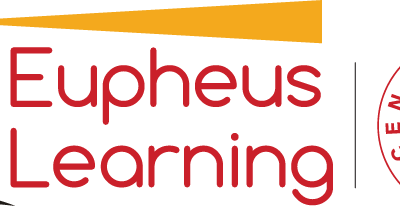

India’s Eupheus Learning Recognised in TIME’s World’s Top EdTech Rising Stars of 2024
-


Kerala Sets National Benchmark with AI Training Programme for 80,000 Teachers
-


Marked by Marks: The Stereotyping of Student Potential
-


Ivy Pressure Unveiled- The Need to Look Beyond the Ivy Gates
-


Ooty Set to Host India’s Premier Liberal Arts Symposium: LASSI 2024
-
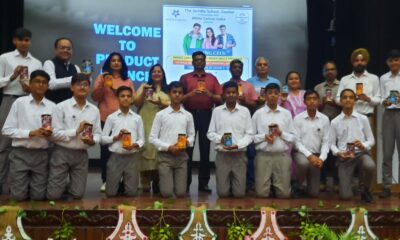

Scindia School Students Launch Start-Ups with White Canvas India’s Young CEO Program
-


Unsupervised Explorations: Rethinking Student Trips
-


Mapping Green Careers: Guiding Students Towards Sustainable Job Opportunities
-


Pricey Presents, Precocious Pressures: The Cost of Gift-Giving to Children
-
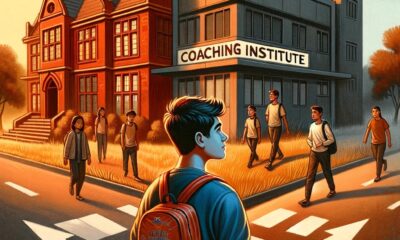

Addressing the Transition From Classrooms to Coaching: The Shifted Focus
Education
Marked by Marks: The Stereotyping of Student Potential
Published
14 hours agoon
April 25, 2024
In the corridors of Prestusse Academy, where aspirations soared as high as the academic standards, Riya stood at a critical juncture. With her heart tethered to the humanities, she yearned to explore the vast landscapes of history, literature, and art. Yet, the societal symphony championing the supremacy of science and mathematics orchestrated a different path for her. Under the immense pressure of family expectations and societal norms, Riya found herself capitulating, stepping onto a path that was not her own.
As she enrolled in the science stream, a part of her spirit wilted. The subjects that once ignited curiosity and wonder in her peers seemed to her like insurmountable walls, blocking the view of her true passions. Despite her efforts, Riya’s academic performance, once stellar when fuelled by genuine interest, became painfully average. The accolades and recognition that used to be frequent visitors in her life now passed her by, unaware of her presence.
The transformation was stark. Riya, who could once articulate the beauty of a poem or the intricacies of historical events with unparalleled eloquence, now found herself lost in the labyrinth of equations and scientific theories. Her confidence, which was once anchored in her intellect and creativity, began to erode, leaving her to question not just her academic choices, but her inherent worth.
The decision to forgo her passion for the humanities in favour of a more ‘prestigious’ stream haunted her. Each day in the science class served as a reminder of what she had sacrificed at the altar of societal expectations. The vibrant discussions and debates that characterised humanities classes were now replaced with a silence that weighed heavily on her, a constant echo of her misplaced aspirations.
As the years passed, the repercussions of her decision rippled through her academic career and beyond. The girl who once dreamt of becoming a historian or a literary critic now found herself meandering through life, devoid of direction. Her attempts to reconnect with her passion for the humanities felt like too little, too late. The confidence and zeal that once defined her were replaced with a sense of mediocrity, as she became a jack of all trades, but master of none.
Riya’s story is a sombre reflection on the cost of conforming to societal pressures at the expense of one’s true calling. It begs the question: How many bright futures have been dimmed by the shadow of conformity? How many Riya’s must we witness before we acknowledge that the true measure of success lies not in the stream chosen, but in the passion and perseverance with which one pursues their dreams?
The tale of Riya’s detour from her passion to a path laid out by societal norms ends with a hard-hitting question for every stakeholder in a child’s education: Are we nurturing the seeds of individual talent and passion, or are we imposing our own unfulfilled aspirations and societal biases, thereby stunting the growth of potential luminaries in fields they were never meant to shine in?
Education
Ivy Pressure Unveiled- The Need to Look Beyond the Ivy Gates
Published
2 days agoon
April 24, 2024
In the heart of Prestise Valley School, nestled in a bustling city that prided itself on academic excellence, the story of Shanaya unfolded—a narrative steeped in ambition, aspiration, and the unspoken realities of chasing Ivy League dreams.
Shanaya , with her keen mind and boundless ambition, had always been the emblem of Prestise Valley’s pursuit of academic supremacy. Encouraged by a system that equated success with admission to the world’s most esteemed universities, she became the embodiment of her school’s aspirations. The corridors buzzed with talks of her future, painting her as the next prodigy destined for Ivy League glory.
As the acceptance letter from an illustrious Ivy League college arrived, it was not just a personal victory for Shanaya but a badge of honour for Prestise Valley. Yet, beneath the veneer of celebration, lay an overlooked truth—while Shanaya was prepared to compete for her place among the elites, she was unprepared for the reality that awaited her beyond the hallowed halls of her dream college.
Embarking on her journey with pride and anticipation, Shanaya soon encountered the stark disparity between being academically eligible and being holistically prepared. Surrounded by peers who were not only academically gifted but also equipped with a wealth of practical skills and worldly insights, she felt increasingly out of her depth. The rigorous curriculum, coupled with the expectations to excel in extracurricular arenas, highlighted the gaps in her preparation. Skills that should have been nurtured alongside academic pursuits—critical thinking, adaptability, and emotional resilience—were conspicuously absent.
The realisation dawned upon Shanaya that the race to the Ivy gates had overlooked the essence of true education. Her school’s relentless focus on prestigious admissions had neglected the foundational aspects that would enable her to thrive in such a competitive environment. With a heavy heart, Shanaya made the difficult decision to return home, facing not just the personal disappointment of unfulfilled potential but also the weight of collective expectations.
Her return was met with a silence that spoke volumes, a stark contrast to the fanfare that had heralded her departure. In the quietude of introspection, Shanaya pondered the lessons learned—not from textbooks, but from life. She resolved to chart a new path, one that balanced academic aspirations with the development of a versatile skill set and a resilient spirit.
Shanaya ‘s story, a mirror to countless young minds navigating the pressures of Ivy League aspirations, serves as a poignant reminder of the need for a holistic approach to education. It challenges the prevailing narrative, urging a shift from the singular goal of elite college admissions to fostering well-rounded individuals capable of navigating the complexities of the global stage.
As we explore the stories behind #IvyPressureUnveiled, how might we reconsider the essence of education—not merely as a race to the pinnacle but as a pathway of growth, discovery, and genuine readiness for life beyond the Ivy gates?
To read more on such trends that need to be called out and #un-trended, head to the April issue of our magazine here.
Education
Unsupervised Explorations: Rethinking Student Trips
Published
3 days agoon
April 23, 2024
In a tale of youthful exuberance and unforeseen peril, six students from Class 12 embarked on a journey to Goa, a rite of passage celebrated by many as a final hurrah before stepping into adulthood. With permission from their parents, who were perhaps too trusting or caught up in their own lives, the group set out with excitement pulsing through their veins. Upon landing, they were greeted not just by the balmy Goan air but by three massive SUVs, reserved for their adventure—a promise of freedom and the thrill of the open road.
Their accommodation was a sprawling villa, costing a small fortune at 70,000 INR per night, equipped with private pools and luxuriously appointed rooms. It was a palace for kings and queens of the night, a haven for six souls intertwined in the throes of adolescence. Three rooms for three couples, the arrangements were a testament to their intentions, seeking privacy and moments of unchecked passion under the guise of a holiday.
As the days unfolded, the allure of Goa’s vibrant nightlife beckoned. The students, drawn to the magnetic pull of music and dance, found themselves in the heart of the party scene, clubbing into the early hours. It was here, amidst the revelry, that they encountered individuals with sinister motives—drug peddlers who saw not just customers but vulnerable targets in these wide-eyed teenagers.
Swept up in a desire to appear worldly and sophisticated, the group made a decision that would pivot their holiday from a dream to a nightmare. They purchased drugs, a choice made without foresight or understanding of the consequences. Their naivety became their downfall when the police, vigilant and unyielding, caught them in possession of these illegal substances.
The aftermath was swift and severe. The teenagers, underage and unprepared for the legal ramifications, were thrust into the cold reality of juvenile custody. Their parents, irrespective of their affluence, were faced with a situation no amount of money could easily resolve. Frantic and fearful, they did everything within their power to secure their children’s release, confronted with the harsh truth of their offspring’s actions.
This story, inspired by real events, serves as a stark reminder of the dangers lurking behind the facade of freedom and the allure of adulthood. It raises pressing questions about the role of guardianship and parental oversight in the lives of teenagers standing on the precipice of adulthood.
Could this grave misstep have been avoided had there been a local guardian present, a guiding light in unfamiliar territory? Would a more vigilant approach from the parents, a pause to question and understand, have rewritten the story’s conclusion? This incident forces us to confront the reality of our responsibilities towards our youth—not just to grant them freedom but to equip them with the wisdom to navigate it. As we ponder the delicate balance between trust and caution, we must ask ourselves: At what cost does freedom come, and are we doing enough to ensure that the journey into independence does not lead to a fall from grace?
To read more on such trends that need to be called out and #un-trended, head to the April issue of our magazine here.
Education
Mapping Green Careers: Guiding Students Towards Sustainable Job Opportunities
Published
3 days agoon
April 22, 2024
In the wake of escalating environmental concerns and the global push towards sustainability, the demand for green careers is surging. This World Health Day, celebrated on 22 April, 2024, let us understand these careers that not only aim to protect and preserve our planet but also offer promising economic prospects. Indian educational institutions, recognising the burgeoning sector of environmental jobs, are increasingly gearing their curricula and guidance services to help students navigate this new green economy.
Understanding Green Careers
Green careers encompass a broad spectrum of industries and sectors that aim to reduce environmental impact and promote sustainability. From renewable energy and sustainable agriculture to environmental policy and green architecture, the opportunities are vast and varied. These careers are crucial in addressing the challenges posed by climate change, resource depletion, and ecological degradation.
The Role of Schools in Promoting Green Careers
Schools play a pivotal role in shaping the career choices of students. By integrating environmental education and sustainability into their curricula, schools can expose students to the importance and viability of green careers. This can be achieved through several strategic initiatives:
- Curriculum Integration: Incorporating topics on sustainability, environmental science, and eco-friendly technologies within the STEM subjects can provide students with the foundational knowledge necessary for pursuing careers in these fields.
- Career Counselling: Schools can offer specialised counselling sessions that inform students about various green careers. These sessions can include information on the requisite educational paths, potential job markets, and long-term benefits of working in eco-conscious sectors.
- Industry Partnerships: Collaborations with companies and organisations in the sustainability sector can offer students real-world exposure through internships, workshops, and guest lectures. These experiences are invaluable in helping students make informed decisions about their future careers.
- Project-Based Learning: Encouraging students to undertake projects that solve real environmental issues can spark interest in green careers. These projects not only enhance learning but also instil a sense of responsibility towards the environment.
The Indian Job Market Prospects
In India, the renewable energy sector is a significant employer, with the country aiming to reach a renewable energy capacity of 450 GW by 2030. Careers in solar panel installation, wind energy engineering, and sustainability consultancy are on the rise. Moreover, the government’s emphasis on clean technologies and sustainable urban planning is creating numerous opportunities in green architecture and environmental planning.
Global Job Market Trends
Globally, the green job market is expanding rapidly. In Europe, the European Green Deal aims to make the EU’s economy sustainable by turning climate and environmental challenges into opportunities across all policy areas. This initiative is expected to bolster job creation in renewable energy, energy efficiency, and green transportation sectors.
In the United States, the growth of the electric vehicle (EV) industry is driving demand for jobs ranging from high-tech battery manufacturing to network systems management for EV charging stations. Similarly, the push for green buildings is fuelling a need for professionals skilled in green construction and building information modelling.
Preparing Students for the Future
By promoting green careers, schools are not only guiding students towards economically viable job paths but are also preparing them to be active participants in the stewardship of the planet. This dual focus on economic growth and environmental sustainability is essential for building a resilient global economy that can address the pressing challenges of our times.
To summarise, as the world increasingly pivots towards sustainability, the role of education in preparing the next generation for green careers becomes more crucial. Schools that embrace this shift not only contribute to the global demand for environmental stewards but also ensure that their students are ready for the future job market—a market that values both the economy and the environment.
Education
Pricey Presents, Precocious Pressures: The Cost of Gift-Giving to Children
Published
4 days agoon
April 22, 2024
In the intricate fabric of contemporary society, entwined with the threads of status and materialism, the ritual of gift-giving to young children has morphed into a showcase of wealth and social stature. This tale shines a light on the ripple effect of such extravagance through the eyes of Ayaan’s peers, young souls caught in the whirlwind of competition and comparison.
When Ayaan arrives at school with sneakers worth 80k or brandishes the latest iPhone as casually as a textbook, it’s not just a display of wealth; it becomes a benchmark, setting aflame a cycle of envy and desire among his classmates. The children, innocent in their yearnings, unknowingly step onto a treadmill of materialistic pursuit, urging their parents towards the edge of financial prudence in a bid to not fall behind.
The spectacle reaches its zenith when Ayaan, in a display of unparalleled opulence, gifts iPods as return gifts on his birthday. An act, while grand, sends shockwaves through his circle, planting seeds of expectation and entitlement in young hearts. Parents, caught between nurturing happiness and teaching value, find themselves navigating a treacherous path of societal pressure and fiscal responsibility.
As each child in Ayaan’s orbit feels compelled to mirror his lavish lifestyle, the essence of childhood camaraderie is shadowed by the looming spectre of materialism. Friendships, once untainted by the world’s complexities, now bear the weight of economic disparity. The playground becomes a silent witness to conversations not of games and dreams, but of gadgets and brands, a testament to a culture veering away from the innocence of youth.
The impact extends beyond the tangible, chipping away at the pillars of equality and mutual respect. As peers vie to outdo each other in a race fuelled by parental indulgence, the divide widens not just in their possessions but in their perceptions of self-worth and success. The classroom, a microcosm of society, reflects a disturbing trend of measuring one’s value through the lens of ownership and extravagance.
This narrative, while centred on Ayaan and his affluent displays, casts a spotlight on the broader societal implications of such gift-giving practices. It prompts a critical examination of the values we impart to our children and the world we aspire to create for them. As we navigate this maze of materialism and the stories of Ayaan and his peers unfold, they serve as a mirror to our collective conscience, urging us to reconsider the legacy we wish to leave behind. The question that beckons us to reflect is profound: Are we raising a generation that values possessions over people, status over substance?
To read more on such trends that need to be called out and #un-trended, head to the April issue of our magazine here.
Knowledge
Young Birders’ Workshop Opens Registration for Children Aged 10-13 Years
Published
1 week agoon
April 16, 2024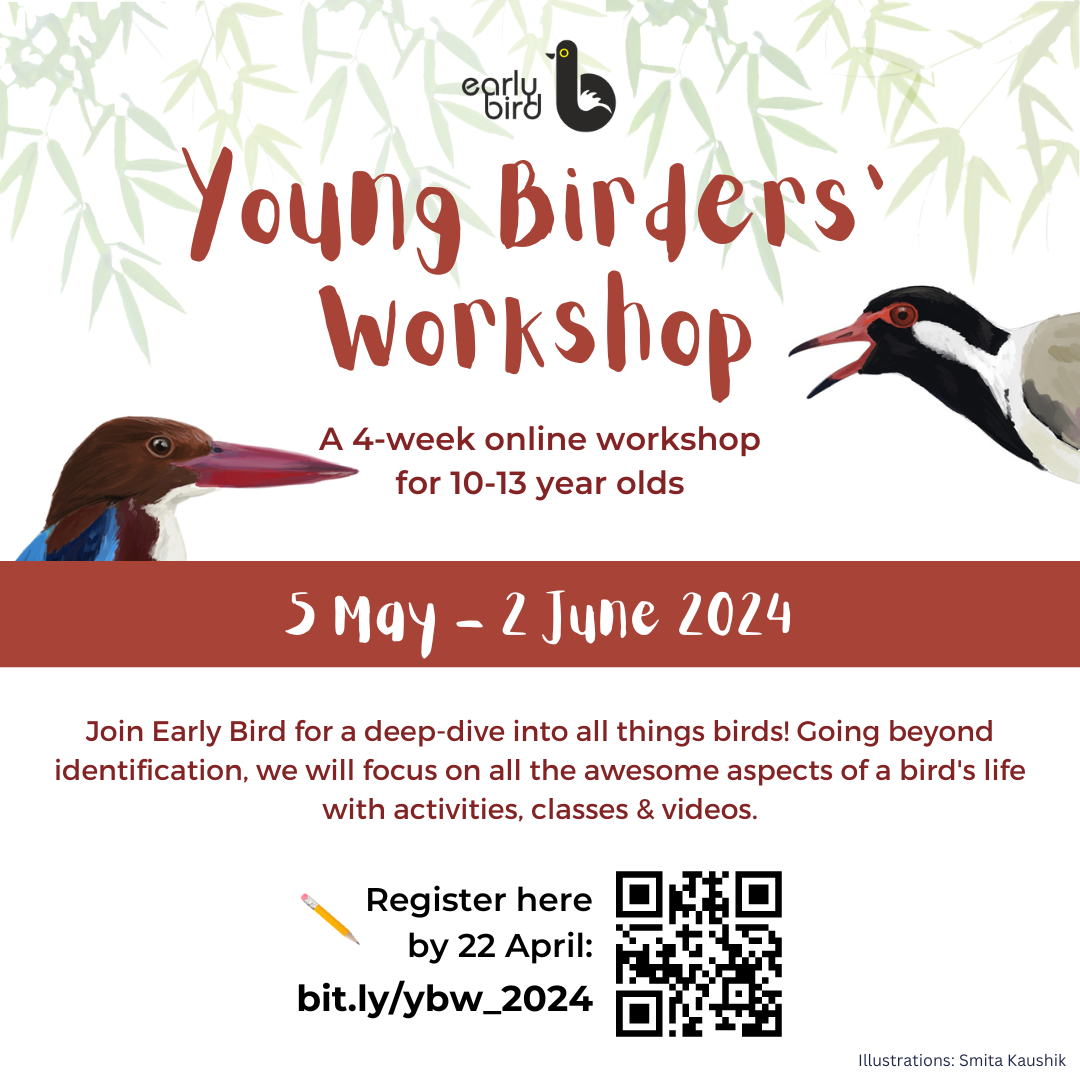
Early Bird, a not-for-profit initiative by the Nature Conservation Foundation, has announced the launch of an online birdwatching workshop tailored specifically for young enthusiasts aged 10-13 years. As birdwatching gains popularity across India, Early Bird aims to deepen young birders’ understanding of their natural surroundings, beyond merely ticking off bird names from their lists.
Set to commence during the summer holidays, this 4-week intensive programme will explore various themes through online sessions that combine multimedia, guided interactions, and lively discussions. These weekly live sessions will be held on consecutive weekends, each supplemented by an illustrated activity sheet that encourages participants to engage with and observe the green spaces around their homes.
The workshop is designed not only to educate but also to foster a deeper appreciation and awareness among children of the ecosystems they inhabit. “The workshop has changed our lives so much. We have found around 30 bird varieties around our house which we were completely unaware of,” shared Rupinder Kaur, a parent of a participant from previous workshops.
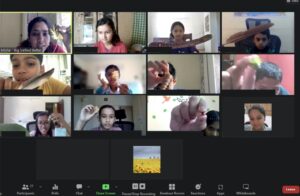
“My son never journaled or made notes. Now, he has started noticing everything when we go out to walk and wants to carry his journal. He has always hated writing but now carries his book and pencil and is ready to make notes. This workshop has made a difference to the way he looks at things. Quite enlightening. Has a lot to ask and share.“ said another participant’s parent.
While the workshop itself is free to attend, there is a nominal fee of Rs. 800 for materials, ensuring that all participants have access to the necessary resources to fully benefit from the experience.



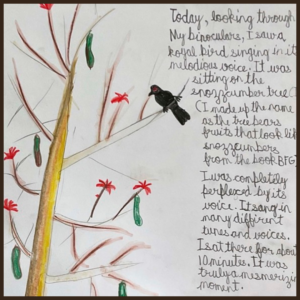
Registrations for the workshop are now open and can be accessed through the link provided here. This initiative aims to be an enlightening experience, allowing young minds to discover and connect with the biodiversity that exists right in their backyards.
Early Bird continues to dedicate itself to bringing children closer to nature through educational content, training educators, and direct outreach, fostering a new generation that values and conserves our natural world.
Education
The Role of Marketing in Education: Navigating the New Educational Landscape
Published
2 weeks agoon
April 10, 2024
In an increasingly competitive and interconnected world, the concept of marketing, once synonymous with businesses and industries, has found its place within the realm of education. As educational institutions vie for attention amidst a cacophony of voices, the need for strategic marketing and public relations (PR) efforts has become paramount. While the moral implications of marketing in education may spark debate, there is a compelling argument for incorporating marketing concepts into the educational curriculum, equipping students, teachers, and parents with the knowledge and skills to make informed decisions in an ever-evolving educational landscape.
Gone are the days when educational institutions relied solely on their academic prowess to attract students. In today’s digital age, where information is abundant and attention spans are fleeting, the ability to cut through the noise and communicate effectively has become a prerequisite for success. From crafting compelling brand narratives to leveraging social media platforms, educational institutions are embracing marketing strategies to enhance their visibility and appeal to prospective students and stakeholders.
However, the incorporation of marketing into the educational sector extends beyond mere promotional efforts. At its core, marketing is about understanding the needs and preferences of your target audience and delivering value accordingly. By teaching marketing concepts to students, educators empower them with critical thinking skills and an understanding of consumer behaviour, enabling them to navigate the complex marketplace of ideas and opportunities.
Moreover, marketing education goes beyond the classroom, extending its reach to teachers and parents alike. Educators, tasked with shaping the minds of future generations, can benefit from an understanding of marketing principles to engage students more effectively and create meaningful learning experiences. Similarly, parents, as key stakeholders in their children’s education, can make more informed decisions about school choice and educational resources by understanding the marketing strategies employed by educational institutions.
Critics may argue that the commodification of education undermines its intrinsic value and fosters a culture of competition at the expense of collaboration. While these concerns are valid, it is essential to recognize that marketing, when approached ethically and responsibly, can serve as a powerful tool for positive change. By promoting transparency, accountability, and accessibility, marketing can help bridge the gap between educational institutions and the communities they serve, fostering a culture of trust and mutual respect.
The integration of marketing concepts into the educational curriculum represents a paradigm shift in how we approach education in the digital age. By equipping students, teachers, and parents with the knowledge and skills to navigate the complexities of the modern educational landscape, we empower them to make informed decisions and drive meaningful change. As we embrace the potential of marketing in education, let us remain mindful of its ethical implications and strive to harness its power for the greater good.
Education
From Overwhelmed to Empowered: Strengthening Educator Skills for Success
Published
2 weeks agoon
April 10, 2024
In the corridors of any classroom, teachers stand as pillars of guidance, tasked not only with imparting knowledge but also with nurturing the holistic development of their students. However, the onerous burden of managing a multitude of responsibilities within resource-constrained environments poses a formidable challenge, underscoring the urgent need for enhanced teacher training programmes.
At the heart of this challenge lies the staggering class sizes prevalent in Indian schools. With classrooms often overflowing with 35 or more students, the task of catering to diverse learning needs while maintaining order can seem insurmountable. Effective classroom management techniques, tailored to accommodate large cohorts, are essential for fostering a conducive learning environment and mitigating stress for both teachers and students.
Moreover, the complexity of the modern educational landscape necessitates a multifaceted approach to teaching. From addressing academic gaps to promoting socio-emotional well-being, educators are expected to wear multiple hats, often without adequate training or support. Enhanced teacher training programmes must equip educators with the pedagogical tools and strategies necessary to navigate this intricate web of responsibilities effectively.
Central to the need for better teacher training is the imperative of managing workload and stress. The relentless demands of completing the curriculum, crafting assessments, and addressing administrative tasks can take a toll on educators’ mental health and overall well-being. By providing teachers with comprehensive training in stress management techniques, time management strategies, and self-care practices, we can empower them to strike a balance between professional duties and personal wellness.
Addressing the point of the topics that should be touched upon, these teacher training programmes must encompass modules on effective assessment practices and differentiated instruction. By equipping educators with the skills to design assessments that cater to diverse learning styles and abilities, we can ensure that every student receives the support they need to thrive academically. Similarly, training in differentiated instruction enables teachers to tailor their teaching methods to meet the individual needs of each student, fostering a more inclusive and equitable learning environment.
In addition to addressing immediate challenges, enhanced teacher training programmes must also focus on future-oriented skills and competencies. With rapid advancements in technology and pedagogy, educators must be prepared to adapt to changing educational landscapes and embrace innovative teaching methodologies. By providing training in digital literacy, collaborative learning, and project-based instruction, we can empower teachers to harness the potential of emerging technologies and create engaging learning experiences for their students.
Ultimately, the need for better teacher training is not merely a matter of professional development; it is a moral imperative. By investing in the growth and well-being of educators, we invest in the future of our nation. Because one teacher’s well-being will lead to the well being of those 35 other kids in a classroom.
Education
Nurturing Healthy Behaviors: The Role of Schools in Shaping Health-Conscious Citizens
Published
3 weeks agoon
April 7, 2024
In the landscape of education, schools play a pivotal role far beyond the realms of academic learning; they are instrumental in moulding the future of our society by nurturing health-conscious citizens. This World Health Day, as we embrace the theme ‘My health, my right’, it’s crucial to spotlight the impact of school programs and policies in fostering healthy lifestyle choices among students. This endeavour not only aligns with students’ rights to education about health but also paves the way for a healthier, more informed generation.
In India, where diverse cultural backgrounds and socioeconomic statuses often dictate one’s access to health education and resources, schools have a unique opportunity to bridge these gaps. The Midday Meal Scheme, one of the largest school nutrition programs globally, serves as a sterling example. By providing nutritious meals to children in government and government-aided schools, it aims not just to combat hunger but to promote nutritional education and healthy eating habits among young learners. This initiative directly impacts the health and educational outcomes of approximately 115 million children across the country, showcasing the powerful role schools can play in shaping health-conscious behaviours.
Furthermore, the Government of India’s Rashtriya Kishor Swasthya Karyakram (RKSK) program emphasizes the importance of adolescent health, targeting the 253 million adolescents in the country. RKSK aims to integrate health education into schools, covering critical areas such as nutrition, mental health, and substance misuse, thereby ensuring that young individuals are equipped with the knowledge and skills to make informed health decisions.
However, the journey doesn’t end with national programs. Individual schools across India are taking innovative steps to encourage healthy behaviours. For instance, several institutions have introduced yoga and meditation into their daily routines, recognizing the importance of mental well-being alongside physical health. These practices not only improve students’ concentration and stress management skills but also instill a lifelong appreciation for holistic health practices.
Moreover, environmental health has become a growing concern, with schools incorporating lessons on sustainability and the importance of preserving our planet for future generations. Initiatives like setting up organic gardens, recycling projects, and awareness campaigns on water conservation are becoming increasingly common, fostering an eco-conscious mindset among students.
Despite these strides, challenges remain. Access to quality health education and resources is not uniform across India’s vast and varied landscape, with rural and underprivileged communities often at a disadvantage. Addressing these disparities requires concerted efforts from policymakers, educators, and communities to ensure that every child, irrespective of their background, has the right to health education and the opportunity to grow into a health-conscious citizen.
As we observe World Health Day, it’s clear that schools are much more than places of academic pursuit. They are crucial battlegrounds in the fight for a healthier future, where informed, conscious choices are not just encouraged but ingrained. By continuing to develop and implement comprehensive health education programs, schools can truly honor the theme ‘My health, my right’, turning it from a vision into a reality for every student across India.
Knowledge
Sharing the spotlight: When parent and child take board exams together
Published
3 weeks agoon
April 5, 2024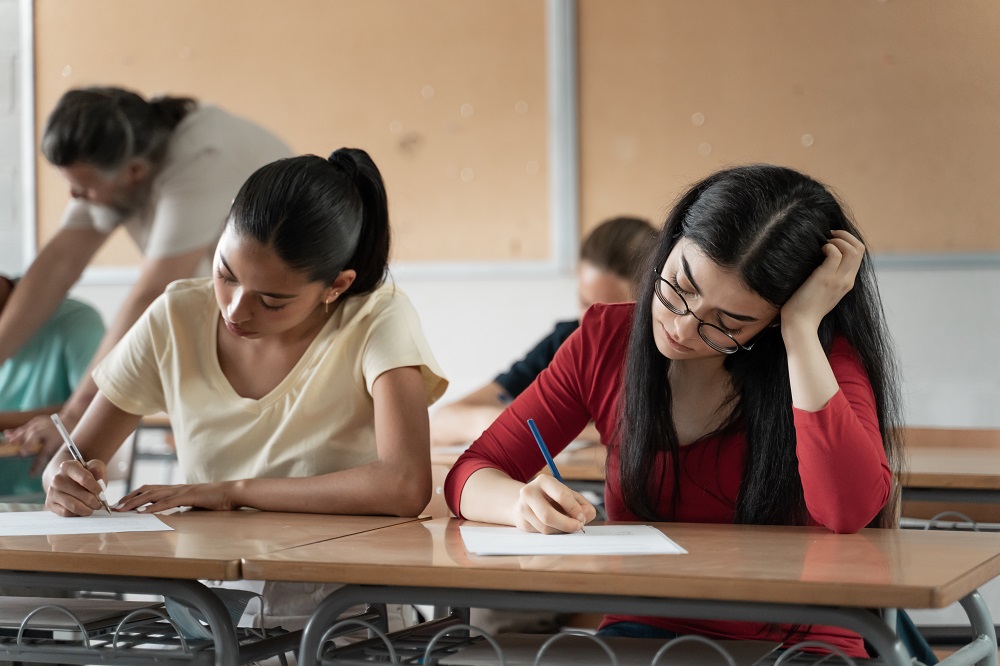
Board examinations are a kind of pressure cooker that often isolates kids and forces them to fight anxiety and expectations on their own. But picture yourself starting this important journey with your own parents, both of you aiming for academic success. This unconventional path, where parent and child become fellow students, unfolds a captivating narrative of shared aspirations, mutual support, and an inspiring exchange of motivation.
A Symphony of Support: Parent and Child, Hand in Hand
Consider the board exam season as a collaborative experience rather than a solo battle. For families in which both parents and children assume the risk together, that is the truth. A potent synergy is unlocked by this singular situation: unshakeable inspiration and reciprocal motivation. When a parent sees their child’s burning ambition, their own hidden aspirations are reawakened. Because of their common experience, they are able to provide advice based on practical knowledge, and the child’s enthusiasm turns into a motivating factor that others find infectious. In response, the child gets much encouragement. The parent becomes a study buddy, a champion in their corner, and a living testament to the fact that learning knows no age limit. This fosters a safe space for vulnerability, where anxieties are shared and triumphs celebrated with genuine empathy.
There are some people who serve as inspiration. Together, they disprove limiting notions and demonstrate that ambition has no boundaries. Their story becomes a beacon for others, inspiring them to follow their dreams and cherish lifelong learning regardless of age. This collaborative effort is about more than just grades; it’s a symphony of a support system where motivation becomes a team effort and rewards are shared. Their achievement is evidence of the transforming power of familial relationships, as they take center stage not as rivals but as comrades. Their tale will have an impact well beyond the exam room, encouraging others to start their own educational and personal development journeys alongside the people they care about.
Shared Spotlight, Separate Journeys: Finding Balance
Although there is no denying the advantages of parent-child board exam experiences, managing shared stress calls for skill. However, managing personal aspirations and expectations can be challenging. Children may feel that their own goals are overshadowed by comparisons, and parents may find it difficult to avoid them. Keeping distinct identities becomes essential.
Practicing healthy boundaries enables success. Create dedicated study spaces, cultivate individual interests, and prioritize open communication. Recall that you are allies, not competitors. Respect each other’s unique paths and celebrate accomplishments. Growth is the focus of our shared journey, not grades, and it can only be achieved by respecting each other’s unique personalities.
The Rewards of a Joint Journey
Teenagers are frequently isolated on the board exam battlefield, forced to deal with challenges on their own. But imagine overcoming this obstacle with your parent by your side, experiencing triumphs and setbacks together. This collaborative approach opens up a wealth of benefits that go beyond personal accomplishments.
Each win becomes a collective celebration, etched in memory as a testament to shared effort. High fives after acing mocks, celebratory dinners after stellar results – these moments weave a tapestry of familial joy. On the other hand, failures present chances for mutual empathy. Late-night chats of support following a challenging test, words of encouragement following a low score—these mutual setbacks strengthen the network and create a lasting connection.
More than just academic results, this journey deepens family connections. Study sessions that last into the night become personal discussions that promote trust and open communication. Together, overcome obstacles strengthen the base of compassion and understanding, fostering an environment that is secure for open communication and vulnerability. This improved communication goes beyond the board exam experience and becomes an important life skill.
Ultimately, this shared endeavor is about more than just academics—it’s about creating lasting experiences, strengthening bonds, and promoting deeper dialogue. It’s a journey that makes an enduring imprint, a constant reminder that group accomplishments and the transforming power of support can result in bigger rewards than individual ones.
A Story Beyond Exams:
This is ultimately a story not just of exams and scores, but of a shared adventure in learning, growth, and unwavering support. It is proof of the power of inspiration and motivation, demonstrating that no matter our age or situation, we can reach our goals as long as we walk hand in hand with the people we love. Together, their spotlight emphasizes their personal journeys, the transformative power of familial bonds, and the limitless opportunities that present themselves when we choose to develop, learn, and dream together.
Authored By:
Tushar Chaudhari,
Executive Director,
Target Publications Pvt. Ltd.
Newsletter

India’s Eupheus Learning Recognised in TIME’s World’s Top EdTech Rising Stars of 2024

Kerala Sets National Benchmark with AI Training Programme for 80,000 Teachers

Marked by Marks: The Stereotyping of Student Potential

Ivy Pressure Unveiled- The Need to Look Beyond the Ivy Gates

Ooty Set to Host India’s Premier Liberal Arts Symposium: LASSI 2024

Scindia School Students Launch Start-Ups with White Canvas India’s Young CEO Program

Unsupervised Explorations: Rethinking Student Trips

Mapping Green Careers: Guiding Students Towards Sustainable Job Opportunities

Pricey Presents, Precocious Pressures: The Cost of Gift-Giving to Children

Addressing the Transition From Classrooms to Coaching: The Shifted Focus

Questioning the Trend of Lavish Farewells- #FarewellFiasco

Young Birders’ Workshop Opens Registration for Children Aged 10-13 Years

STEMpedia Successfully Completed Codeavour 5.0- India’s National Innovation Fest

Reviving School Education: Countering the Coaching Centre Dominance
CBSE to Initiate Pilot for National Credit System in Grades 6, 9, and 11

The Role of Marketing in Education: Navigating the New Educational Landscape

From Overwhelmed to Empowered: Strengthening Educator Skills for Success

NCERT Introduces Bridge Month Programme for Class 6 Amid Textbook Transition

Indian Embassy Advocates for India-US Collaboration in Education Sector

Nurturing Healthy Behaviors: The Role of Schools in Shaping Health-Conscious Citizens

CBSE Updates Exam Structure for 11th & 12th Class; Concept-based Questions Now 50% of Weightage

Sharing the spotlight: When parent and child take board exams together

Rebalancing the Scales: The Urgent Call for Humanities in STEM-Dominated Curricula

Palette of Possibilities: Nurturing Creativity in Schools through Modern Art

Empowering Minds: The Journey of My Guide Inside with Christa Campsall

Life of My Father: Dr. Jagdish Gandhi, a Pioneer in Education

Mayo College Announces New Leadership

Post-pandemic: Embracing Well-being in India’s Schools with My Guide Inside

Empowering the Future: The Success of Beti Bachao Beti Padhao in Girls’ Education

Is Students’ Data in Safe Hands in a Digital World?

Central Government Sets New Framework for Coaching Centres

FPSB India and IIM Bangalore Forge Strategic Partnership to Advance Financial Education

Radio Broadcasting in Schools: Creating a Platform for Student Voices

Kerala Introduces ‘Water-Bell’ Initiative in Schools to Boost Hydration

India to recognise Farsi as a classical language under New Education Policy

Farewell to a Pioneer: Dr. Jagdish Gandhi’s Enduring Legacy in Education

Anticipating a Progressive Leap: The Education Sector’s Hopes for Union Budget 2024

Lexicon Schools Spark Innovation with STEAM Fest

The Need to Preserve Newspapers for Bias-Free Education

A Voice for All Ages: The Enduring Legacy of Ameen Sayani in Indian Education

Seth M. R. Jaipuria School launches CBSE School in Bhiwadi, Rajasthan

From 2025-26, Indian Students to Get Two Opportunities to Sit for Board Exams

The Rising Leaders’ Summit 2024: A Timeless Learning for Future Educational Leaders

International Women’s Day 2024: Are We Not Special?

ISRO Launches Young Scientist Programme 2024 for Budding Space Enthusiasts

Teach for India Invites Applications for its 2024 Fellowship Program

Ministry of Women and Child Development Unveils National Curriculum Framework for Early Childhood Care and Education

World Theatre Day: Let Theatre Arts Make Classroom’s Showtime Spectacular!

India Sets 6-Year Minimum Age for Class 1 Admissions Nationwide

CBSE considering Open Book Exams for classes 9-12, to do a pilot run in November
SGEF2023 | Special Address by Rama Datt, Trustee, Maharaja Sawai Man Singh II Trust, Jaipur

ScooNews | After Movie | ScooNews Global Educators Fest 2023

Aftermovie | NIES2 UP Chapter | 21 Jan 2023

WEBINAR | Gamification in Education: How Digital Badges Can Boost Student Motivation and Engagement

ScooNews | WEBINAR| Importance of Physical Activity for Children at School | Plaeto

SCOONEWS | WEBINAR | WHY DIGITIZING YOUR SCHOOL IS A MUST | TEACHMINT

Keynote Address | Lakshyaraj Singh Mewar

Anurag Tripathi, Secretary, CBSE at SGEF2022

How schools can nurture every student’s genius

Aftermovie | SGEF2022 | Jaipur

Li Andersson | Minister of Education | Finland

Anurag Tripathi, Secretary, Central Board of Secondary Education (CBSE) discusses NEP2020

ScooNews | Early Ed Asia 2019 | Aftermovie
#PodarECEconf : Pursuing quality ECE

#CBSE Class XII #Results #Highlights

The interesting story of India’s educational system | Adhitya Iyer

A young scientist’s quest for clean water

The Danger of Silence: Clint Smith

National Digital Library of India is an initiative by HRD Ministry

Remembering Kalpana Chawla on her birthday!

Message from Sadhguru for Students!
Message from Sadhguru for Students!

The Untapped Genius That Could Change Science for the Better

Eddy Zhong: How school makes kids less intelligent TEDxYouth@Beacon

#TEDxCanberra : What if every child had access to music education…
Trending
-
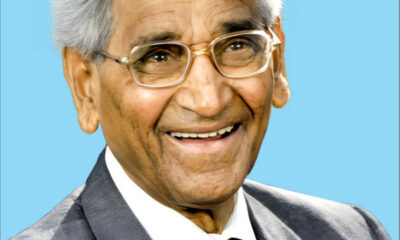
 Inspiration1 month ago
Inspiration1 month agoLife of My Father: Dr. Jagdish Gandhi, a Pioneer in Education
-
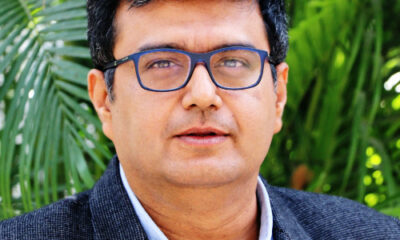
 Education3 months ago
Education3 months agoMayo College Announces New Leadership
-

 Education1 month ago
Education1 month agoPost-pandemic: Embracing Well-being in India’s Schools with My Guide Inside
-
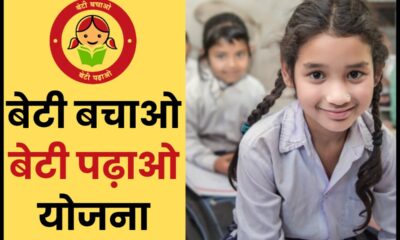
 Education3 months ago
Education3 months agoEmpowering the Future: The Success of Beti Bachao Beti Padhao in Girls’ Education
-

 Knowledge3 months ago
Knowledge3 months agoIs Students’ Data in Safe Hands in a Digital World?
-
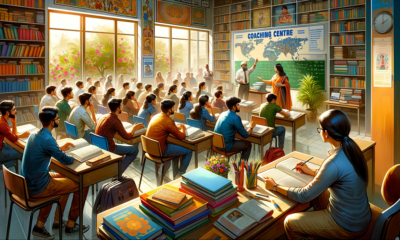
 Education3 months ago
Education3 months agoCentral Government Sets New Framework for Coaching Centres
-
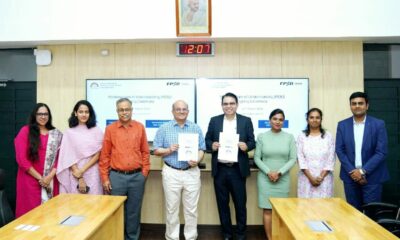
 Education4 weeks ago
Education4 weeks agoFPSB India and IIM Bangalore Forge Strategic Partnership to Advance Financial Education
-
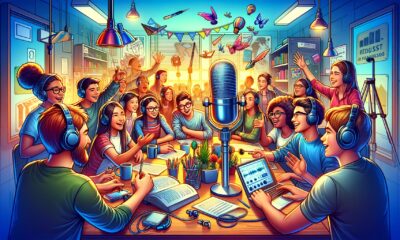
 Education2 months ago
Education2 months agoRadio Broadcasting in Schools: Creating a Platform for Student Voices
-

 Education2 months ago
Education2 months agoKerala Introduces ‘Water-Bell’ Initiative in Schools to Boost Hydration
-

 Education3 months ago
Education3 months agoIndia to recognise Farsi as a classical language under New Education Policy



